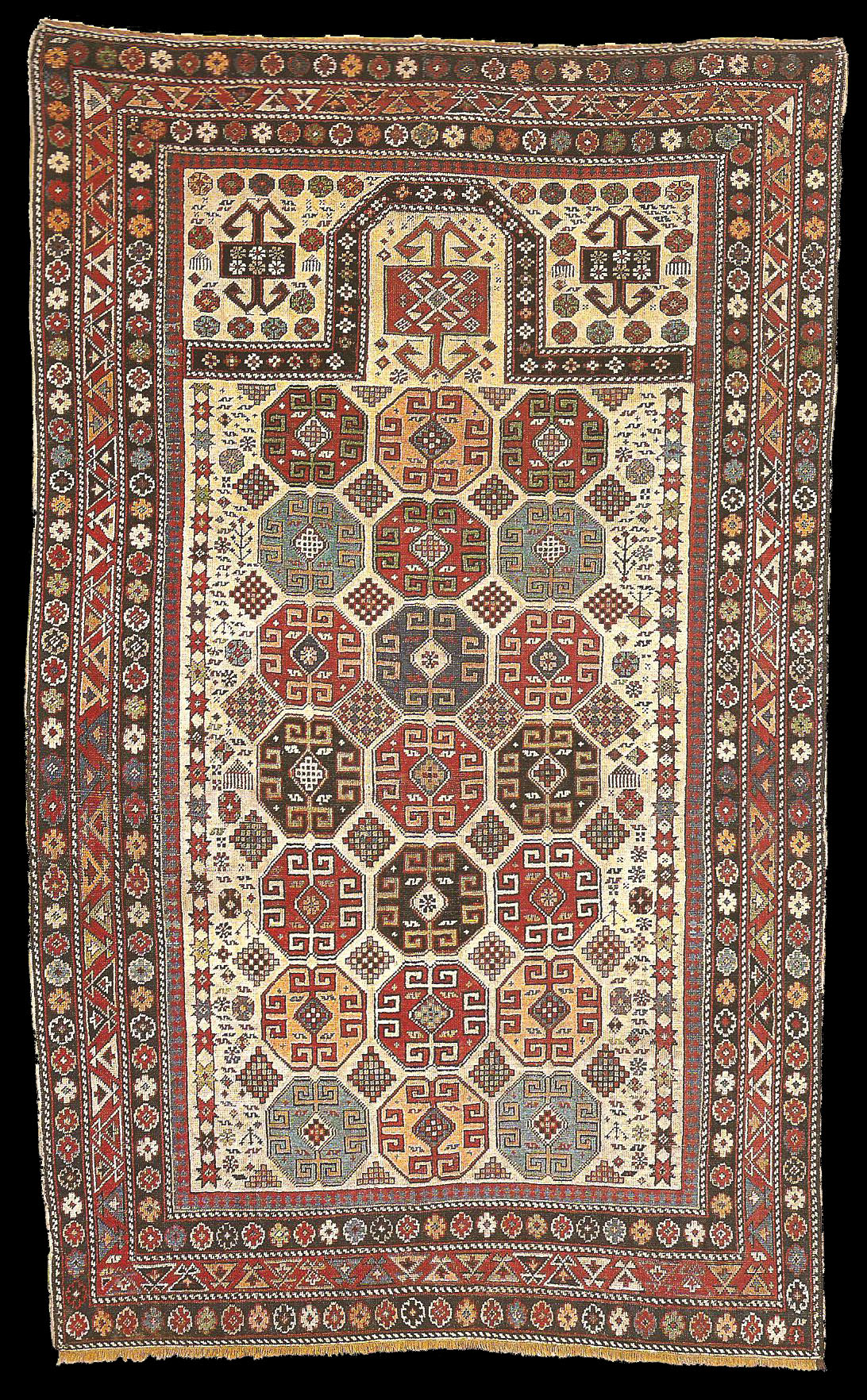|
This rug was one of the first to be attributed to Moghan (Lefevre auction
catalogue, 1982). Jean Lefovre
identified this type in 1982 as a distinctive group of prayer rugs, with a
strong geometric style, which he assigned to the mountainous Moghan region.
The region borders present-day Iran and was the last of the Caucasian
provinces to be ceded to Russia, in 1829. Three further examples of this
type have subsequently been published*. All four examples feature a
white-ground field with octagon pattern and kochanak or 'horn' crosses
tinder the prayer arch. (In this rug kochanaks also appear in the spandrels3)
The border systems are identical, featuring triangles with arrowhead motife.
An early Shirvan runner with a main border of identical octagons was sold at
Skinner's in 19914, a Kazak example with very similar octagons is shown in
plate 16.
* - The second example appeared in Butterweck et. al., Austrian Collections,
assigned to Shirvan and dated to the first half of the 19th century. (it was
published opposite pl. 66, a soumak bag with octagons of identical design in
the field and a border of identical triangles with arrowhead motifs. The
commentary relating to the rug read, in part, "the overall design was
previously only known from three soumak khorjins (ibid. pl.66; Bausback,
Kelim, fig. 113, Reinisch, Sattletaschen, fig. 24) but this peice is older
than the three bags.) The third example was sold at Skinner's (1 June, 1991,
lot 172), assigned to Shirvan; it was purchased by a New England dealer and
re-sold to Eberhart Hermann, who published it in his catalogue (1992), pl.
49, assigned to Moghan. (Hermann pointed to a relationship between his rug
and another that he had previously published in (SOT IV, pl. 36 which,
although it employed a different and very rare anchor design [also used in
soumak bags] featured identical octagons as subsidiary motifs and had a very
similar color palette, as well as a large kochanak cross under the prayer
arch.) The fourth example appeared at a single-owner sale at Sotheby's New
York, 9 March 1994 (lot 3), assigned to Shirvan.
 |

